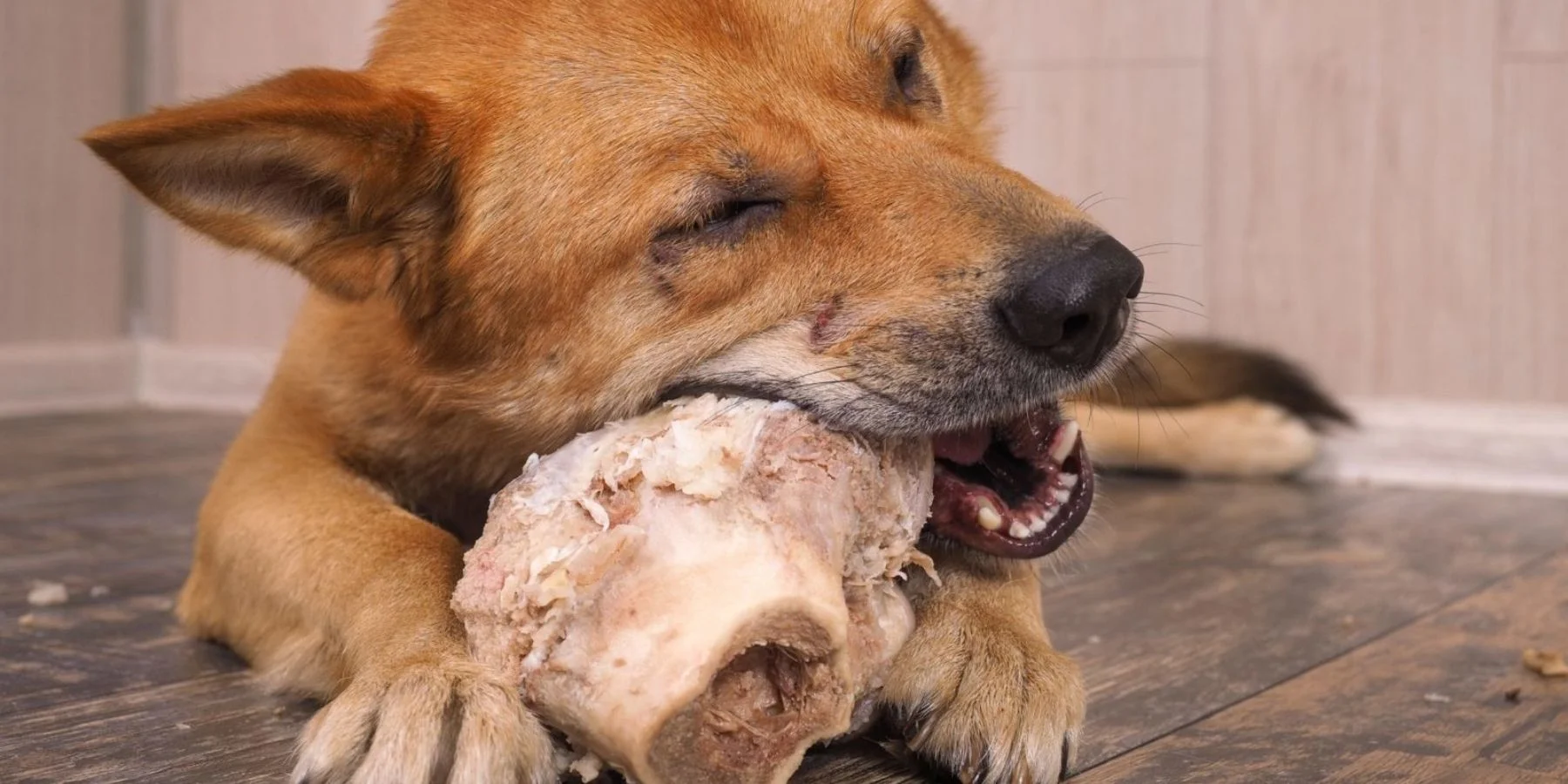PET HEALTH
The best diet for a dog is the diet he does best on, but sometimes even veterinarians do not agree as to what dogs can eat, including if dogs can eat human food. Canned food, kibble, dehydrated and freeze-dried varieties are available on your pet store shelves, but the idea of getting back to basics and feeding raw is increasingly tempting to more pet parents. Due to some bacterial risks with raw feeding, some veterinary professionals advise against it. However, those who are more holistic-minded view a diet consisting of raw meat and bones as a solution to many health issues.
What is a Raw Meat & Bones Diet?
A raw food diet should consist of:
- 70% muscle meat
- 10% raw meaty bones
- 10% secreting organ meats (kidneys, liver, spleen, pancreas, brain, testicles and ovaries)
- 10% vegetables1
If your dog has trouble chewing, you may be able to grind the bones and add to them to food. Just remember: never feed cooked bones to your dog.
Potential Benefits of a Raw Food Diet for Dogs
New Zealand veterinarian, Dr. Rebecca Brown believes raw meat, vegetables, and bones may have the following benefits for dogs:
- Improve skin, coat & body condition
- Increase energy
- Help with some behavioral issues
Brown does however caution that raw meat and bones are not for every pet.2
Still, a number of holistic vets believe a raw diet significantly reduces the risk of bloat. Monique Maniet, DVM, of Veterinary Holistic Care in Bethesda, claims three-quarters of her clients feed their dogs a raw or home-cooked diet.3
Can Dogs Eat Raw Bones?
- Raw bones clean teeth: Chewing on raw bones removes tartar from the tooth surface, which lowers the risk of your dog developing gum disease.
- Raw bones are natural: Unlike processed, chemical infused rawhide and other chews, raw bones are preserved by freezing.
- Raw bones provide mental stimulation: Diverting your dog from chewing unwanted items is a good thing! Raw bones provide mental stimulation and keep your dog busy.
A good rule of thumb to consider following: feed your dog a bone the same size as their head no more than twice a week.
Potential Risks of a Raw Food Diet for Dogs
The Food & Drug Administration states a diet consisting of raw meat is potentially risky.4
As stated above, according to the FDA, the main concerns over a raw diet appear to be surrounding the possibility of bacterial transmission. Yet some veterinarians also raise issue over the possibility of bones breaking teeth, causing intestinal/internal punctures, or even causing a dog to choke.
One study performed by a Finland-based independent research organization called DogRisk5 found low incidence of campylobacter, salmonella, and yersinia in the frozen raw foods they tested, while another study on cats showed a small increase in the digestibility of a raw beef-based diet.5 It appears however, there is still much to learn.
In the wild, dogs’ diets typically consist of 80% raw meat, while vegetables and grains are obtained from the bellies of the prey they consume. The demand for raw meat and bones to feed our dogs continues to rise, but it’s up to pet parents to know where the food is sourced from, and how to properly store it to prevent contamination. Remember to always speak with your vet before changing your pet's diet.
If you're on the fence about raw meat, you can consider plant-based meat alternatives.
Eat Up the Savings With a MetLife Pet Plan
Raw diets aren't for all dogs, but some may benefit from them. If you need to feed your pup higher-quality food but are worried about the cost, a MetLife Pet Insurance policy could provide coverage for vet-prescribed food and supplements. And if your dog needs to see a vet because a raw food diet isn't agreeing with them or they accidentally ingested a bone, you might be able to get money back for those diagnostics and treatments. Get a free quote today to see how a plan with MetLife Pet can help you save on vet bills.

